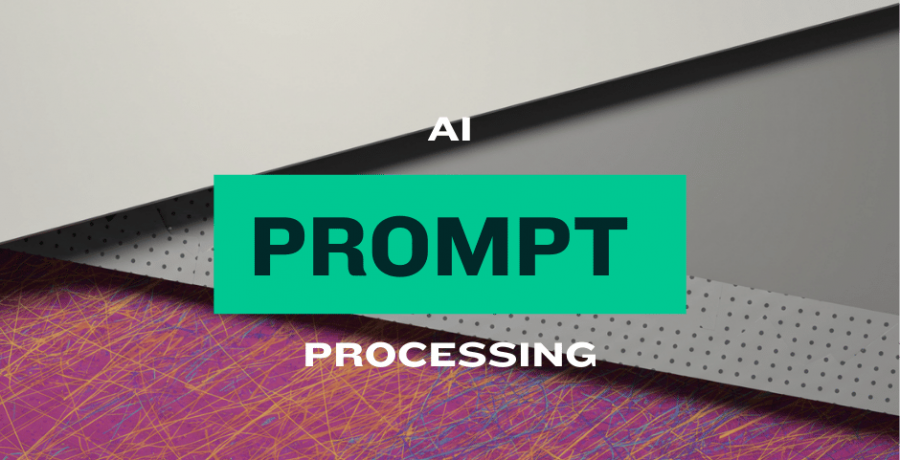Weighted Prompts: Balancing Specificity and Creativity
Definition of Weighted Prompts
Weighted prompts have emerged as a sophisticated technique for guiding AI models to generate more nuanced and tailored outputs. Weighted prompts are instructions given to AI models where specific keywords or phrases are assigned numerical values, or "weights," to emphasize their importance in the generated content. This allows users to fine-tune the AI's focus, dictating which aspects of the prompt should be prioritized.
Importance of Balancing Specificity and Creativity in AI-generated content
The effectiveness of AI-generated content hinges on a delicate equilibrium between specificity and creativity. Too much specificity can stifle the AI's innovative potential, leading to rigid and predictable results. Conversely, excessive creative freedom might result in outputs that lack focus or relevance to the intended purpose. The art of prompt engineering lies in finding this balance, allowing for content that is both aligned with user intent and imbued with AI's unique creative capabilities.
Overview of how weighted prompts influence output
Weighted prompts act as a steering mechanism, directing the AI's attention and resources towards the most crucial elements of a request. By assigning weights, users can subtly or dramatically alter the AI's interpretation of the prompt, leading to a wide range of outputs from a single base instruction. This granular control empowers users to achieve highly customized results, pushing the boundaries of what's possible with AI-driven content creation.
Understanding Weighted Prompts
Explanation of weighted prompts in AI models (e.g., GPT, DALL·E, etc.)
AI models like GPT (Generative Pre-trained Transformer) for text and DALL·E for images operate by predicting the next element in a sequence, whether it's a word or a pixel. Weighted prompts influence this prediction process by adjusting the probability distribution of potential outputs. For instance, in text generation, a higher weight on a specific keyword increases the likelihood of that word and related concepts appearing prominently in the generated text. Similarly, in image generation, weights can emphasize certain objects, styles, or colors.
How weights are assigned to different elements of a prompt
Weights can be assigned in various ways, depending on the AI platform and model. Common methods include:
- Numerical Weights: Assigning a numerical value to keywords (e.g., "dog:2" to emphasize "dog" twice as much as other words).
- Keyword Boosters: Using special syntax (like brackets or parentheses) to increase the importance of terms (e.g., "(vibrant colors)" or
[detailed background]). - Negative Weights: Assigning negative weights to de-emphasize or exclude certain elements (e.g., "ugly face:-1" to reduce the likelihood of generating images with unattractive faces).
- Layered Prompts: Structuring prompts in layers, where each layer builds upon the previous one with added weights to refine the output progressively.
Examples of weighted prompts in practice
Text Generation (GPT):
-
Unweighted: "Write a short story about a cat."
-
Weighted: "Write a short story about a [mysterious:1.5] cat who lives in a (haunted house:2)."
- The weighted prompt is more likely to produce a story with a stronger emphasis on mystery and a haunted house setting compared to the unweighted prompt.
Image Generation (DALL·E/Stable Diffusion):
-
Unweighted: "A futuristic cityscape."
-
Weighted: "A futuristic cityscape with (neon lights:2) and [flying cars:1.5], (dark and moody:-0.5)."
- This weighted prompt will likely generate an image where neon lights and flying cars are more prominent, while the overall mood is less bright and cheerful due to the negative weight on "dark and moody."
The Role of Specificity in Prompts
Benefits of specificity:
1. Clearer and more focused outputs
Specific prompts provide the AI with precise instructions, leading to outputs that are more directly aligned with the user's vision. By detailing desired elements, styles, and tones, specificity minimizes ambiguity and guides the AI towards a targeted result.
2. Reduced ambiguity in results
Ambiguous prompts can lead to a wide range of interpretations by the AI, often resulting in outputs that miss the mark. Specificity narrows down the possibilities, ensuring that the AI focuses on generating content that closely matches the intended meaning.
Challenges of over-specificity:
1. Limiting creative possibilities
While specificity is valuable, excessive detail can box in the AI, preventing it from exploring novel and unexpected avenues. Overly prescriptive prompts may stifle the AI's ability to generate truly original or innovative content, as it becomes constrained by rigid parameters.
2. Risk of overly rigid or repetitive outputs
Over-specificity can lead to outputs that are technically accurate but lack dynamism or originality. If prompts are too detailed and repetitive, the AI may produce content that feels formulaic and lacks the spark of genuine creativity.
The Role of Creativity in Prompts
A. Benefits of creative freedom:
1. Diverse and unexpected results
Prompts that embrace creative freedom encourage the AI to explore a wider range of possibilities, leading to diverse and often surprising outputs. By leaving room for interpretation, users can tap into the AI's capacity for generating novel ideas and unique content.
2. Encouraging innovation and exploration
Creative prompts can serve as a catalyst for innovation, allowing users to discover unexpected solutions and artistic expressions. By venturing beyond highly specific instructions, users can leverage AI as a partner in exploration, uncovering new creative territories.
B. Challenges of excessive creativity:
1. Lack of coherence or relevance
Prompts that are too open-ended may result in outputs that lack coherence or fail to address the user's underlying needs. Without sufficient guidance, the AI might generate content that is tangential, nonsensical, or simply irrelevant to the intended purpose.
2. Difficulty in achieving desired outcomes
Excessive creative freedom can make it challenging to achieve specific goals. If the prompt is too vague, it becomes difficult to predict or control the AI's output, making it less reliable for tasks that require targeted results.
Balancing Specificity and Creativity
A. Strategies for finding the right balance:
1. Adjusting weights for key elements in prompts
Weighted prompts offer a dynamic approach to balancing specificity and creativity. By strategically adjusting weights, users can guide the AI towards desired outcomes while still allowing room for creative exploration. For instance, users might assign high weights to core concepts to ensure relevance, while leaving other aspects unweighted to encourage AI-driven innovation.
2. Iterative testing and refinement of prompts
Finding the optimal balance often involves experimentation. Iterative testing – generating outputs with slightly modified prompts and weights – is crucial for understanding how different parameters influence the AI's behavior. This process of refinement allows users to progressively hone their prompts to achieve the desired blend of specificity and creativity.
B. Tools and techniques for optimizing weighted prompts
- Prompt Libraries and Managers: Tools that help organize, test, and refine prompts, often including features for managing weights and tracking output variations.
- Weight Visualization Tools: Some AI platforms offer visual feedback on how weights affect different aspects of generated content, aiding in intuitive prompt design.
- Community Sharing and Collaboration: Platforms where users share successful weighted prompts and techniques, fostering collective learning and best practices.
C. Case studies or examples of successful balanced prompts
Example 1: Marketing Copy (Text)
-
Goal: Generate ad copy for a new eco-friendly laundry detergent.
-
Balanced Prompt: "Write short, engaging ad copy for a laundry detergent. Keywords: [eco-friendly:1.8], (powerful cleaning:1.5), gentle fabrics, [fresh scent:1.2]. Tone: [uplifting:1.3], informative."
- This prompt balances specific product features (eco-friendly, powerful cleaning) with desired tones (uplifting, informative) and leaves room for creative phrasing within those parameters.
Example 2: Concept Art (Image)
-
Goal: Create concept art for a fantasy character, a "forest guardian."
-
Balanced Prompt: "Concept art of a forest guardian. Description: (ancient tree spirit:2), [flowing robes:1.5], (glowing eyes:1.4), intricate bark texture, moss and vines. Style: [fantasy illustration:1.6], ethereal, [detailed:1.3]."
- This prompt specifies key visual elements (tree spirit, robes, glowing eyes) and stylistic preferences (fantasy illustration, ethereal) while allowing the AI creative freedom in interpreting details like pose, expression, and specific design elements.
Practical Applications of Weighted Prompts
A. Use cases in content creation (e.g., writing, art, design)
Weighted prompts are transforming creative fields:
- Writing: Authors can use weighted prompts to control the tone, style, and thematic elements of stories, articles, and scripts.
- Art: Artists can guide AI image generators to produce specific styles, compositions, and emotional atmospheres in digital paintings and illustrations.
- Design: Designers can leverage weighted prompts to rapidly iterate on design concepts, exploring variations in layout, color palettes, and visual elements for websites, logos, and marketing materials.
B. Applications in business (e.g., marketing, product development)
Businesses are finding diverse applications for weighted prompts:
- Marketing: Generating targeted ad copy, social media content, and personalized marketing messages with specific brand keywords and desired emotional responses weighted for impact.
- Product Development: Rapidly prototyping product designs, visualizing concepts, and generating user interface mockups based on weighted feature specifications.
- Customer Service: Crafting empathetic and helpful customer service responses by weighting keywords related to problem-solving, reassurance, and brand voice.
C. Educational and research applications
Weighted prompts are also valuable in education and research:
- Education: Creating customized learning materials, generating diverse examples for students, and developing interactive educational content tailored to specific learning objectives by weighting key concepts.
- Research: Assisting in data analysis by generating textual summaries or visualizations with weighted emphasis on specific data points or trends. Exploring hypotheses by generating diverse scenarios based on weighted parameters in simulations.
Challenges and Limitations
A. Difficulty in predicting outcomes with weighted prompts
While weighted prompts offer more control, predicting the exact output remains challenging. AI models are complex, and subtle changes in weights can sometimes lead to unexpected results. Users need to develop an intuitive understanding through experimentation, but precise control is not always guaranteed.
B. Potential biases introduced by weighting
Weighting can inadvertently amplify existing biases in AI models. If certain keywords or concepts are consistently over-weighted, it could lead to outputs that reinforce stereotypes or lack diversity. Careful consideration and testing are needed to mitigate these potential biases.
C. Ethical considerations in using weighted prompts
The power of weighted prompts raises ethical questions:
- Manipulation of Perception: Weighted prompts could be used to subtly manipulate public opinion by generating biased content that emphasizes certain viewpoints.
- Authenticity and Authorship: As AI-generated content becomes more sophisticated, questions of authorship and originality become more complex, especially when weighted prompts heavily influence the creative process.
- Accessibility and Equity: Unequal access to advanced prompt engineering techniques and tools could exacerbate existing digital divides, creating disparities in the ability to leverage AI for creative and economic benefit.
Future Trends and Developments
A. Advances in AI prompt engineering
Prompt engineering is a rapidly evolving field. Future advancements are likely to include:
- More Intuitive Weighting Interfaces: User-friendly interfaces that simplify the process of assigning and visualizing weights, making prompt engineering more accessible to non-technical users.
- Adaptive Weighting Systems: AI models that can dynamically adjust weights based on user feedback or evolving creative goals, leading to more iterative and responsive content generation.
- Integration with Creative Workflows: Seamless integration of weighted prompts into existing creative software and platforms, streamlining AI-assisted content creation.
B. Emerging tools for managing weighted prompts
New tools are emerging to help users manage and optimize weighted prompts:
- Prompt Databases and Marketplaces: Platforms for sharing, discovering, and selling effective weighted prompts for various applications.
- AI-Powered Prompt Optimizers: Tools that use AI to analyze prompts and suggest weight adjustments to improve output quality and achieve specific goals.
- Collaborative Prompt Engineering Platforms: Online environments that enable teams to collaboratively develop, test, and refine weighted prompts for complex projects.
C. The evolving role of human-AI collaboration in creative processes
Weighted prompts are fostering a new era of human-AI collaboration in creative fields. Humans are becoming "prompt engineers," guiding AI models with nuanced instructions, while AI contributes its generative capabilities and unique creative perspectives. This partnership is likely to redefine creative workflows, enhancing human creativity and unlocking new forms of artistic and functional expression.
Recap of the importance of balancing specificity and creativity
In conclusion, weighted prompts are a powerful tool for navigating the balance between specificity and creativity in AI-generated content. By strategically assigning weights, users can guide AI models to produce targeted outputs while still harnessing their innovative potential.
Final thoughts on the potential of weighted prompts
Weighted prompts represent a significant step forward in AI-driven content creation. They offer a level of control and nuance that empowers users to achieve highly customized results across diverse applications, from creative arts to business and research. As AI models become more sophisticated and prompt engineering techniques advance, the potential of weighted prompts to revolutionize content creation is immense.






Comments (0)